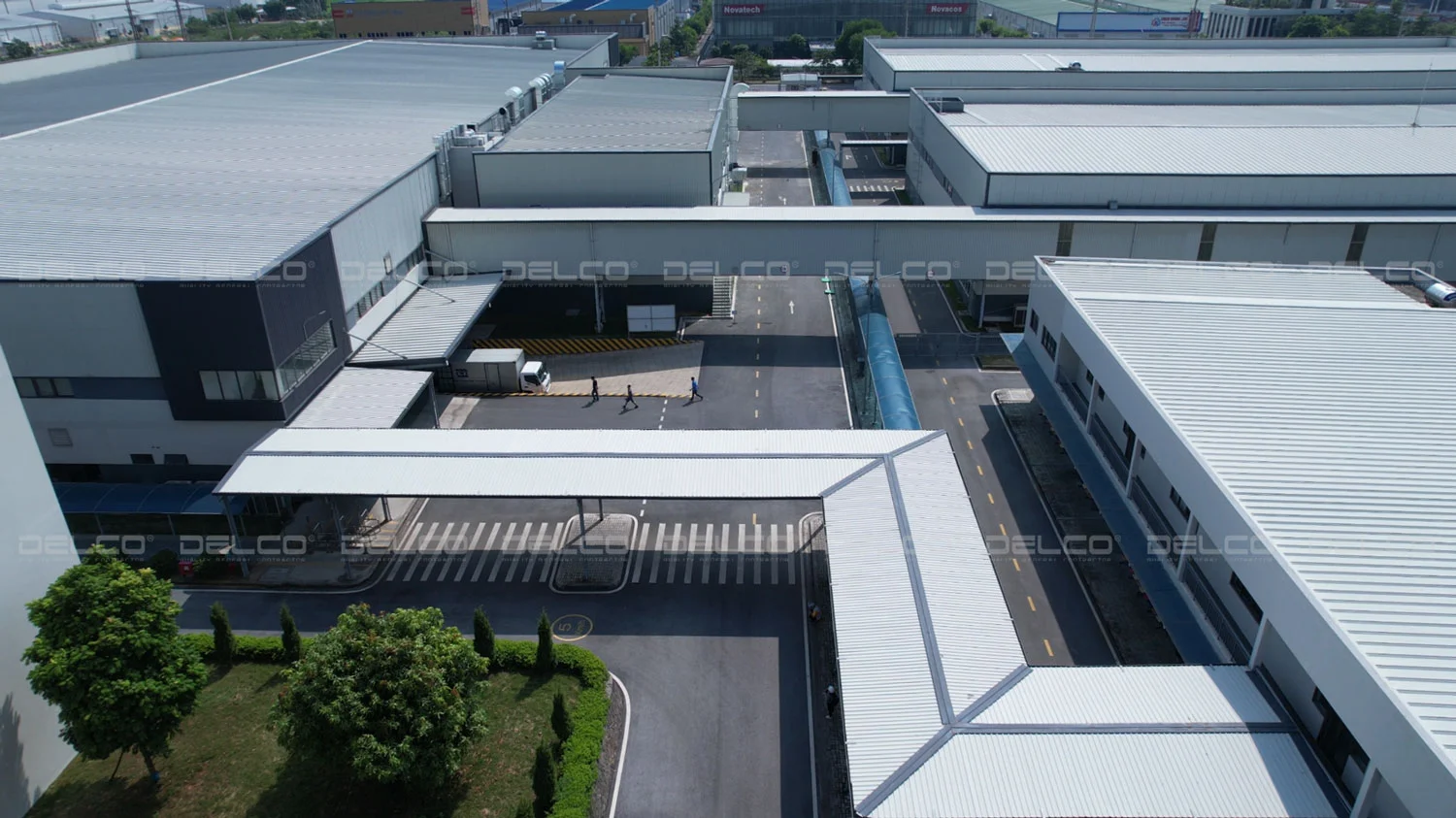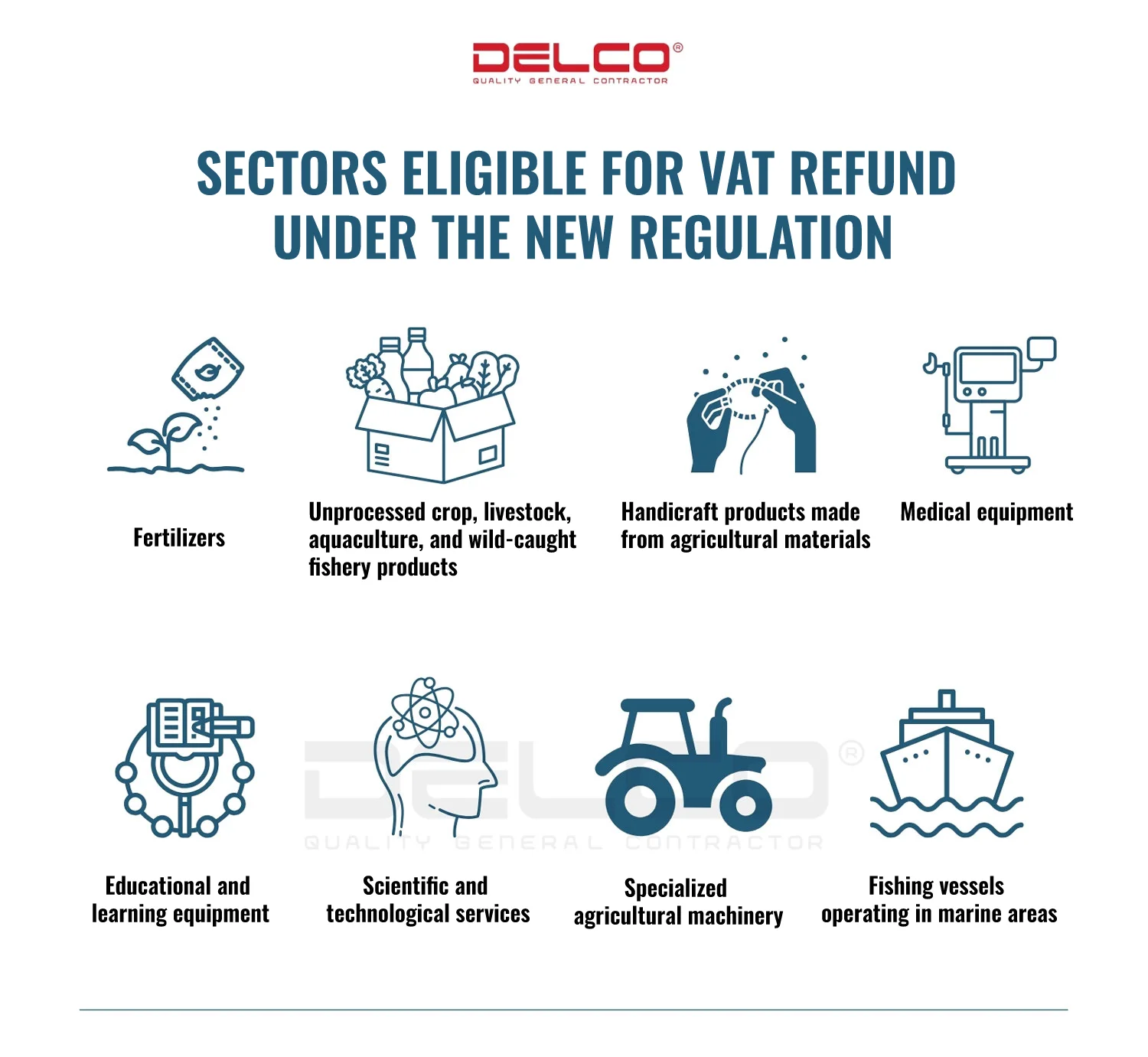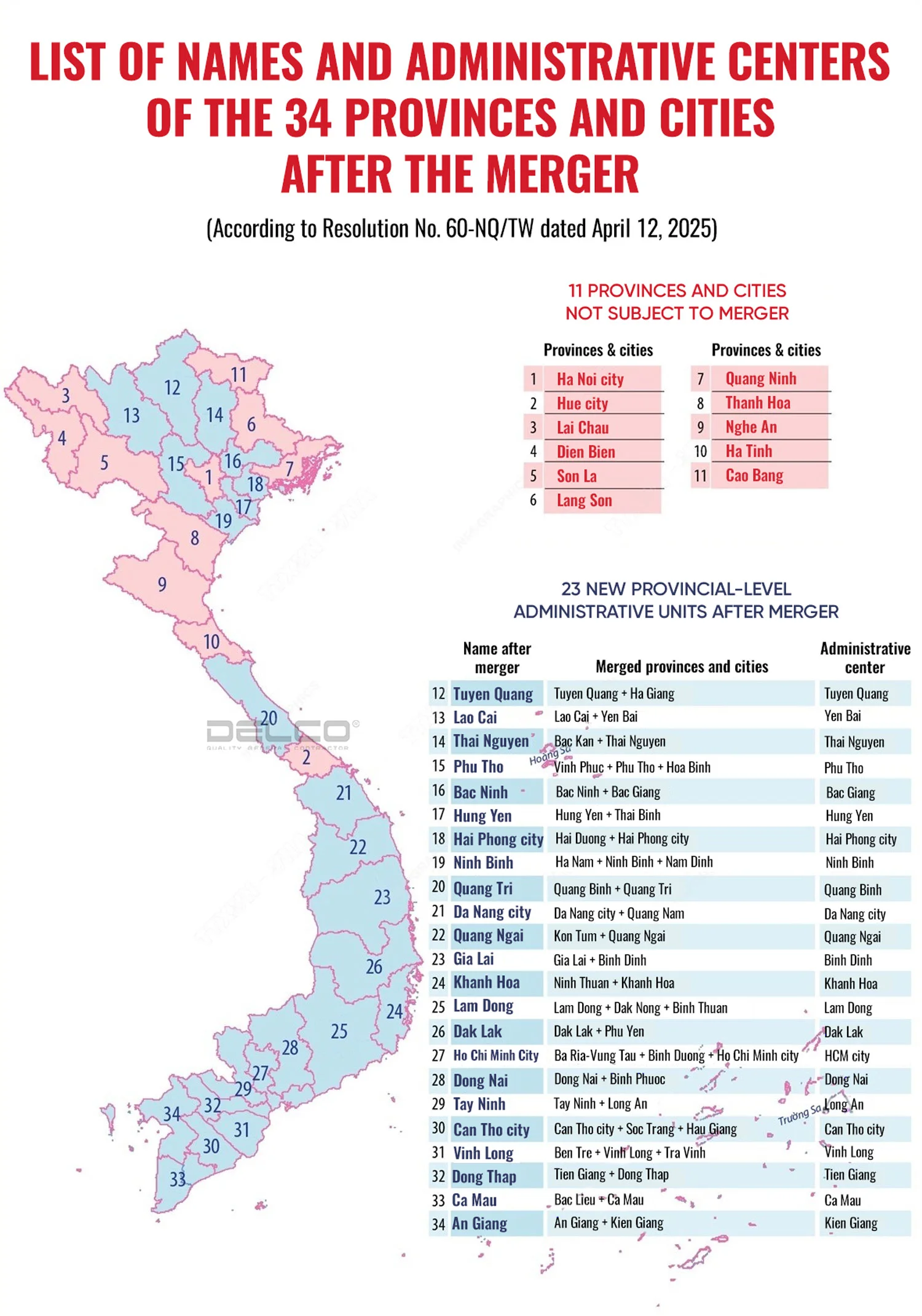Building a factory in Da Nang, FDI investors benefit from many specialized incentives such as corporate income tax exemption, non-refundable assistance for creative startups, financial and interest rate assistance, and support for technological innovation…
Why FDI investors choose to build factories in Da Nang
Favorable geographic location
Da Nang is one of five centrally-run cities in Vietnam and holds a significant geopolitical advantage in the central region. The city plays a key role in economics, society, and national defense, as it is located at the heart of Vietnam, serving as a link between the northern and southern regions. Specifically, Da Nang is 764 kilometers from Hanoi and 964 kilometers from Ho Chi Minh City, allowing businesses to easily access the country’s major economic hubs with just over an hour of flight time.
Additionally, the city serves as the gateway to the 1,450-kilometer East-West Economic Corridor (EWEC), connecting Vietnam with Laos, Thailand, and Myanmar. From Da Nang, it takes only 2-3 hours by flight to reach major markets in the ASEAN region, such as Bangkok, Singapore, and Kuala Lumpur. These factors position Da Nang as an important logistics hub for both Vietnam and Southeast Asia.
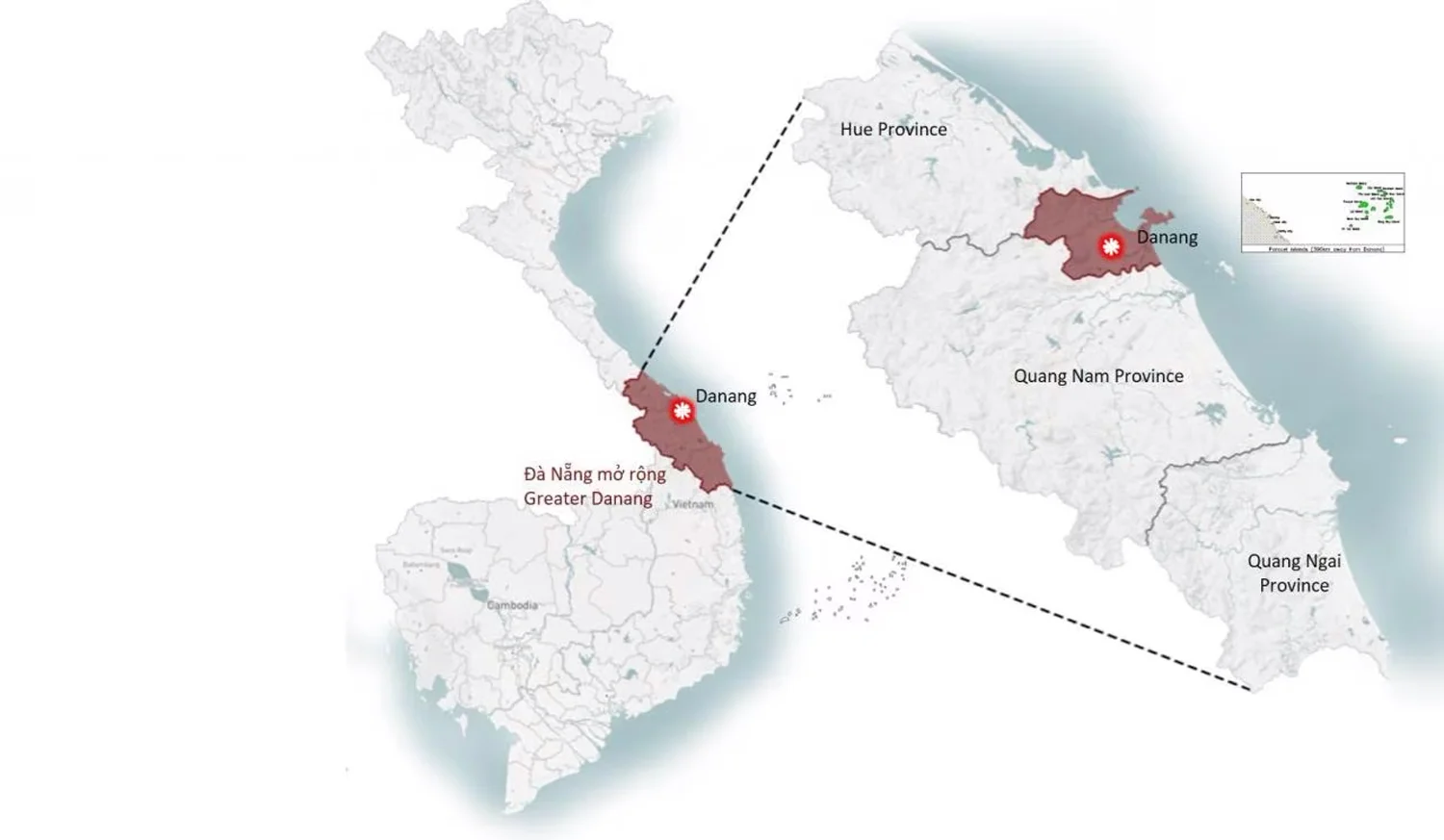
Modern transportation infrastructure
Da Nang is a crucial transportation hub in the ASEAN region, with all five modes of transport: road, rail, waterways, sea, and air.
Road: Da Nang connects to the northern and southern provinces via major routes such as National Route 1A, National Route 14B, the North-South Expressway, and the 6.28-kilometer-long Hai Van Tunnel, significantly reducing cargo transportation times. Additionally, the city boasts modern infrastructure, including the western Han River tunnel, the Hue three-level overpass, and a dense network of bridges over the river, facilitating smooth transportation and business operations.
Rail: The North-South railway passes through Da Nang for about 30 kilometers, including key stations like Kim Lien, Thanh Khe, Da Nang, and Hai Van Nam, ensuring efficient and fast cargo transport.
Waterways: Da Nang has a river system spanning 63.2 kilometers, of which 19.9 kilometers are designated as national inland waterways. The city has planned and developed nine inland waterway routes for tourism, with major routes such as Han River – Cu Lao Cham (50 kilometers); Han River – Marble Mountains (13.5 kilometers); and Han River – Cam Le – Tuy Loan – Thai Lai (20.2 kilometers).
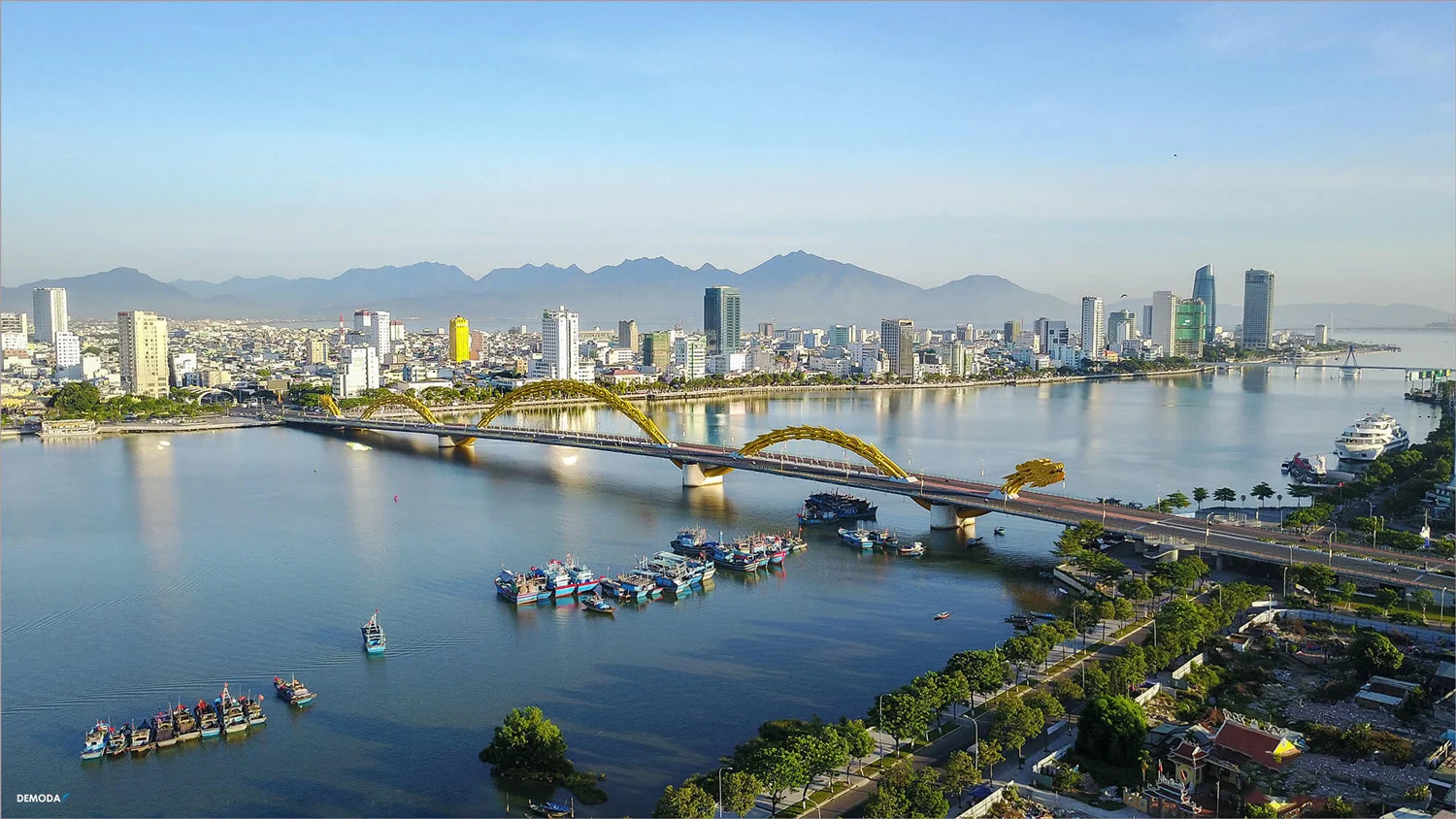
Sea transport: Da Nang is a major sea transport hub in Vietnam, home to several deep-water ports such as Tien Sa Port and Da Nang Port, with a total handling capacity of over ten million tons of cargo per year. Besides, the Liên Chieu Port is set to be completed by 2025, with a planned capacity of up to fifty million tons annually. This will significantly reduce the time and cost of import and export operations for businesses.
Air transport: Da Nang International Airport is one of the three largest airports in Vietnam, with the capacity to handle over 200,000 tons of cargo and thirteen million passengers annually. By 2030, it is expected to expand to accommodate twenty-eight million passengers. The airport offers over thirty international routes, directly connects Da Nang to global markets such as Singapore, Bangkok, Kuala Lumpur, Seoul, etc., playing a crucial role in the region’s import-export activities.
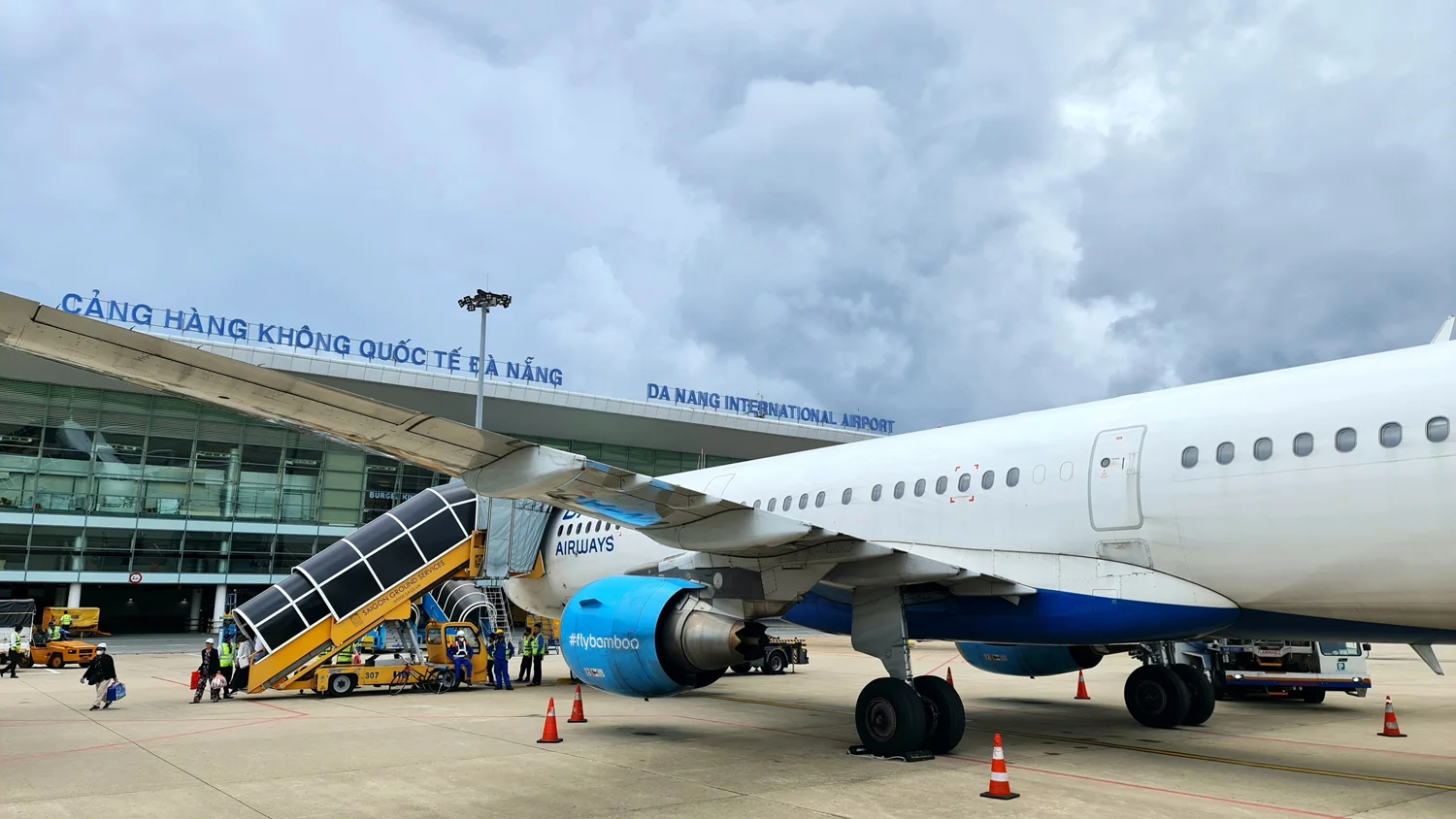
A leading province in green industrial development
Green industrial development is a growing trend receiving significant attention and investment from many countries. To attract FDI investors, Da Nang is one of the first cities in Vietnam to establish an eco-industrial zone, promoting sustainable and environmentally friendly production. Specifically, at the Hoa Khanh Industrial Zone, several measures have been implemented, including providing RECP assessments for twenty-nine enterprises and proposing 334 cleaner production solutions, 228 of which were executed from 2016 to 2020. These measures are estimated to help enterprises save over 14 billion VND per year, reduce nearly 50,000 cubic meters of wastewater, and cut more than 5,000 tons of CO2 emissions annually.
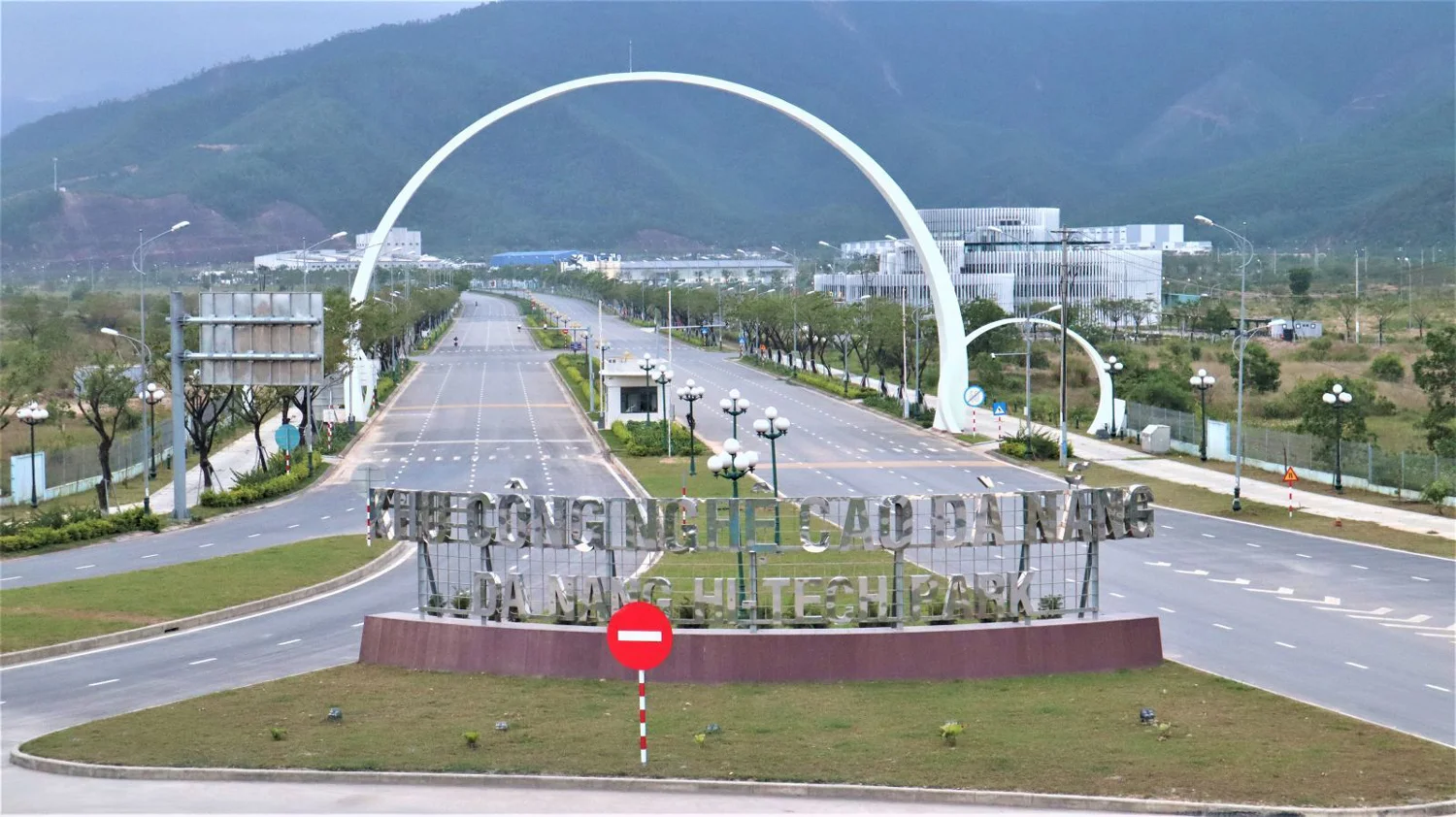
High-quality human resources
Da Nang boasts a high-quality workforce thanks to its robust vocational education system, with sixty vocational institutions across the city. These include seventeen colleges, six vocational schools, twelve vocational training centers, and twenty-five other institutions operating in this sector. The system enrolls nearly seventy-five thousand students, offering training in 286 different fields, covering key areas such as trade and services, industry and construction, and agriculture. On average, Da Nang’s educational system admits over thirty-eight thousand students annually across various levels, meeting the growing demand for skilled labor in the city’s key economic sectors. This presents a significant advantage for companies designing and building factories in Da Nang, as they can easily recruit and train local workers.
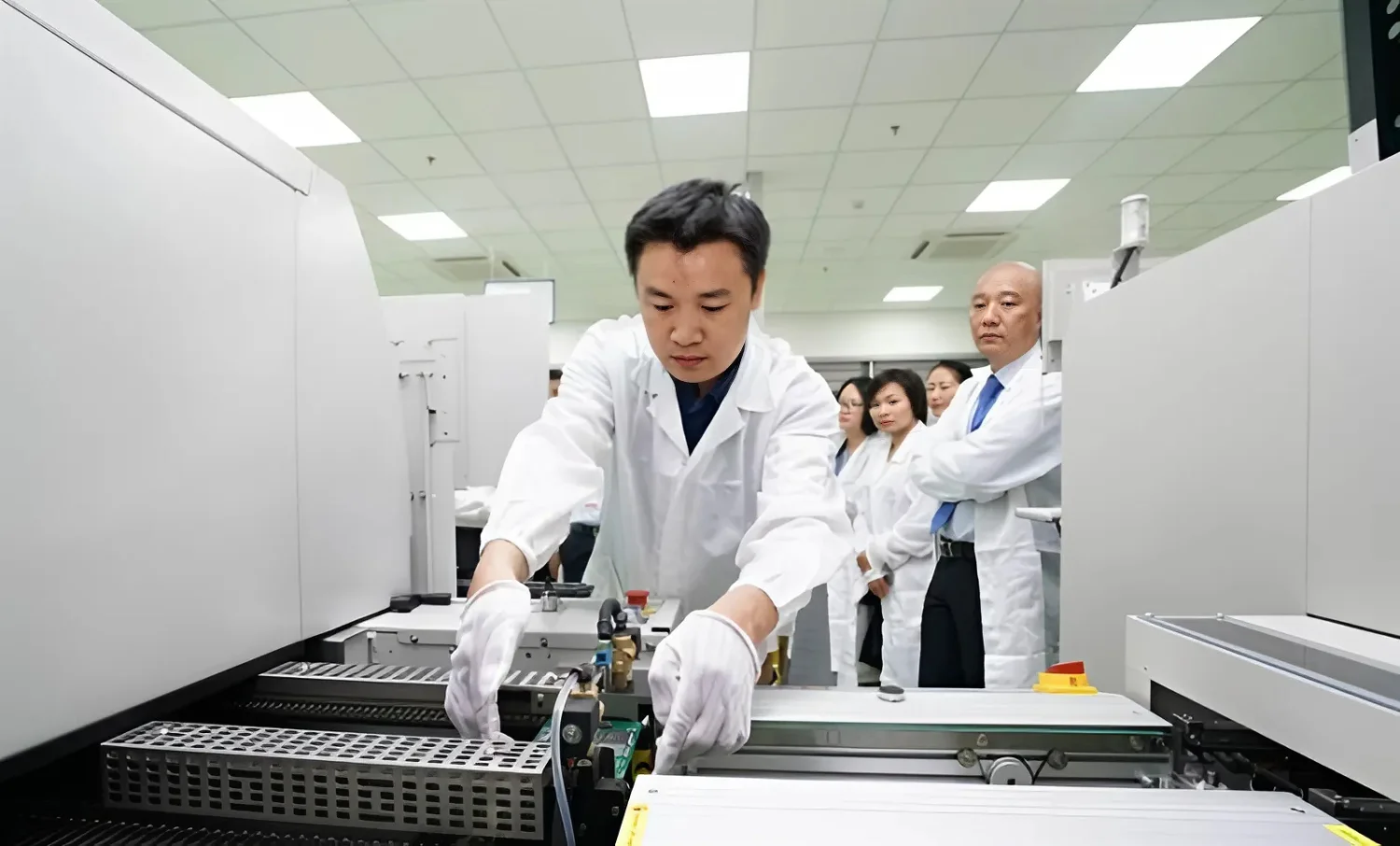
Incentive policies to attract FDI to Da Nang
Policies to attract FDI investors
To encourage FDI investors to build factories in Da Nang, the city has introduced several support policies for small and medium-sized enterprises (SMEs) for the 2024–2026 period, including:
- Financial and interest rate support: Da Nang implements interest rate support policies to help businesses access credit more easily. This includes facilitating connections between banks and businesses and simplifying loan procedures.
- Technological innovation and digital transformation: The city encourages businesses to enhance their technological capabilities and adopt digital transformation through technical and financial support programs.
- Startup and innovation support: Da Nang offers training programs, startup consulting, and support for innovative projects to foster the growth of new businesses.
- Support for value chain participation and human resource development: The city assists businesses in joining global value chains and strengthens the training and development of high-quality human resources to meet the needs of businesses.
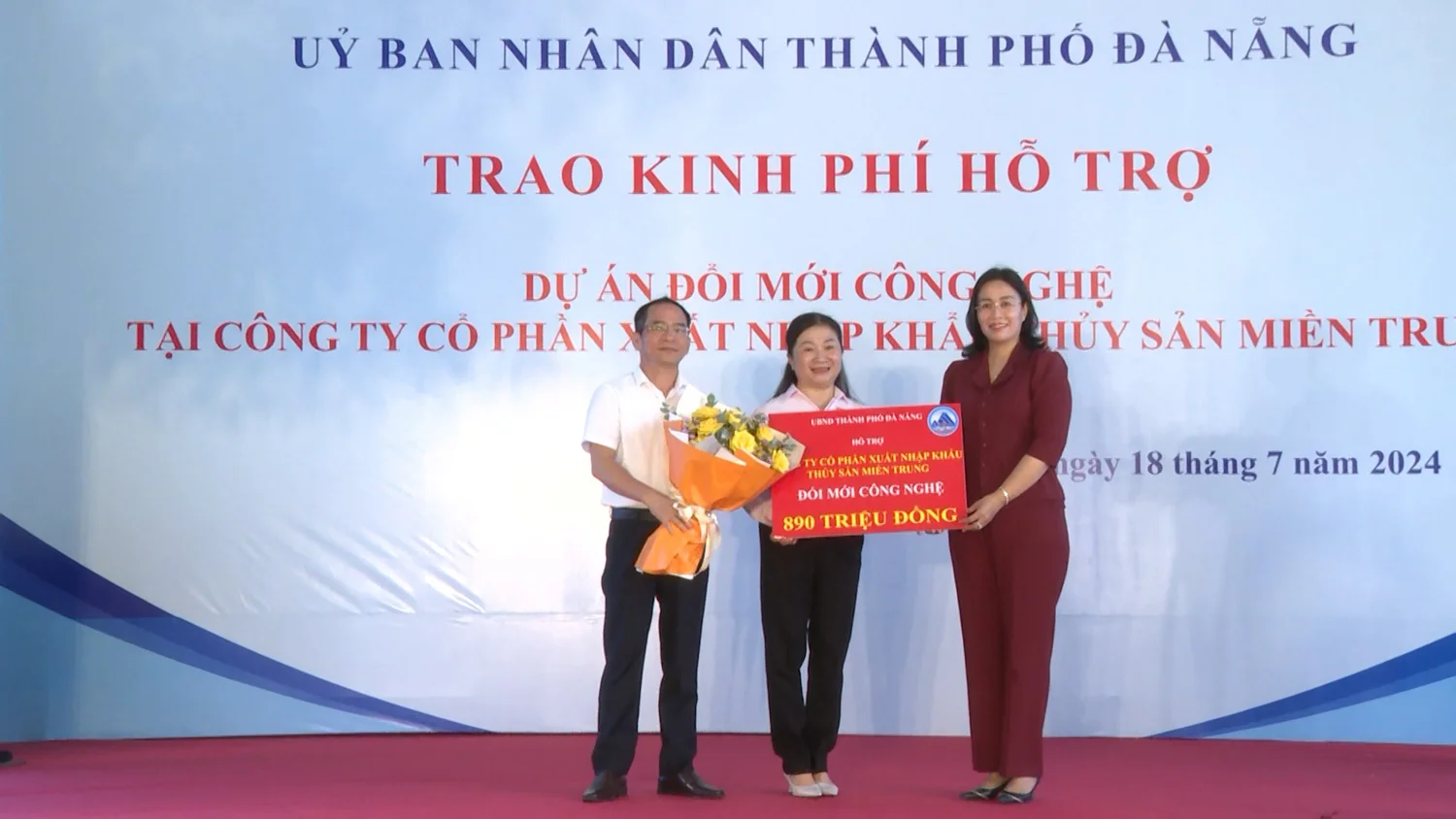
Investment incentives for FDI enterprises
In addition to national incentives, Da Nang offers its own investment incentives to promote the development of sectors such as semiconductor chips and artificial intelligence (AI). These incentives take effect on January 1, 2025:
- Corporate and personal income tax exemptions for five years for:
- Innovative startups, semiconductor chip enterprises, and AI companies located in Da Nang.
- Individuals and organizations earning income from transferring shares, capital contributions, or the right to contribute capital in innovative startup enterprises, semiconductor microchip companies, and artificial intelligence companies that have not yet conducted public securities offerings as per the law.
- Experts, scientists, and talented individuals working at innovative startup companies, science and technology organizations, semiconductor microchip enterprises, and artificial intelligence companies in Da Nang.
- Non-refundable assitance: This includes costs related to developing startup projects from the city’s budget, as well as funding for recruitment, expert hiring, and startup support services.
Da Nang’s industrial development direction
In 2024, Da Nang aims to make significant breakthroughs to fulfill its 2021–2025 Five-Year Plan, striving for an economic growth rate of 8–8.5%. The city has identified high-tech industries as the key driver of its economy, focusing on attracting investment in fields such as semiconductor chip design, artificial intelligence (AI), big data technology, and digital technology.
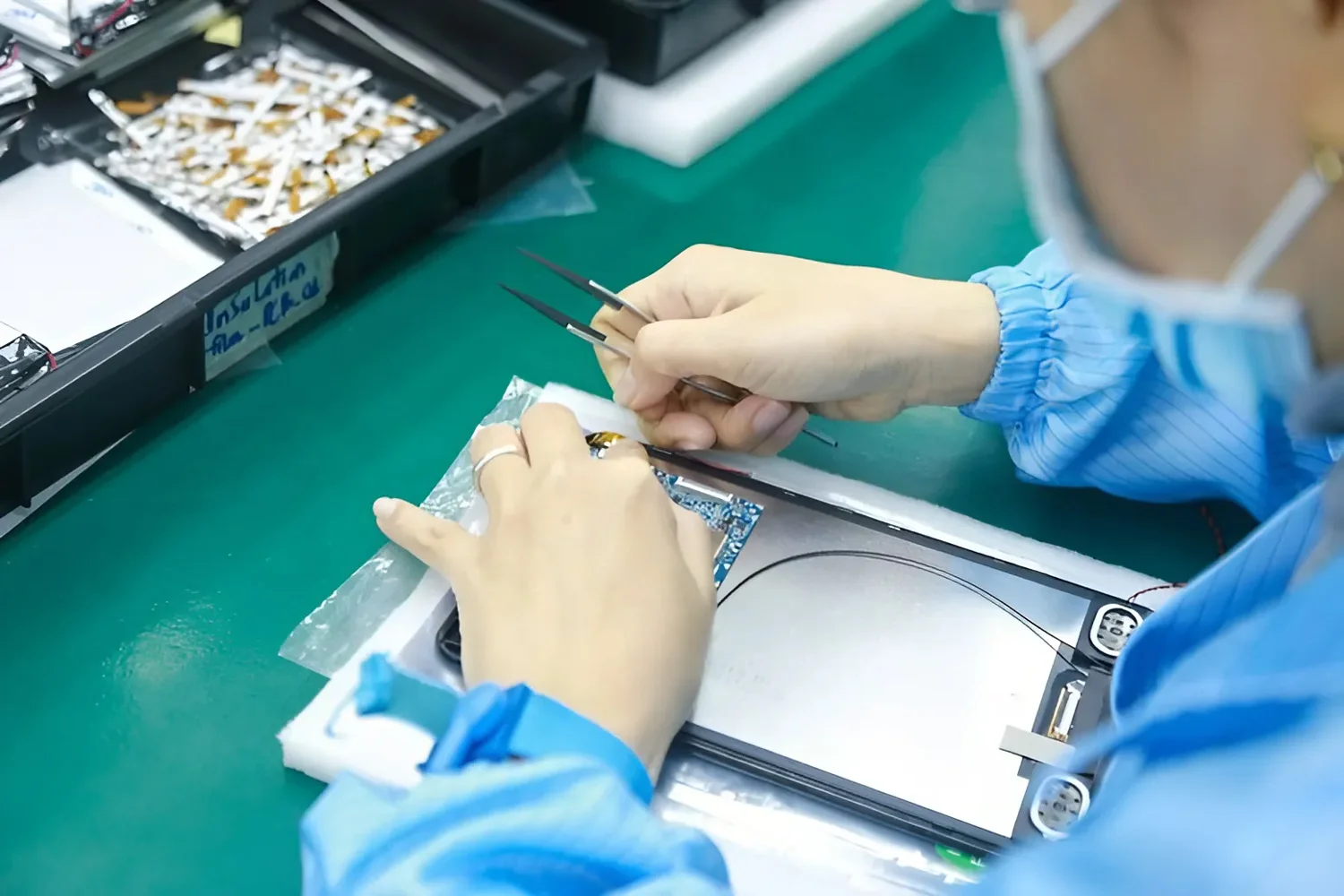
Da Nang is also prioritizing the development of green industries, aiming for a sustainable and environmentally friendly economy. The city encourages the application of clean production technologies, energy-saving measures, and emissions reduction in industrial zones like the expanded Hoa Khanh Industrial Zone and Lien Chieu Industrial Zone. By 2025, Da Nang plans to convert one industrial zone into an eco-industrial zone, ensuring 100% of industrial zones and clusters have centralized wastewater treatment systems that meet environmental standards. Additionally, all businesses will be required to register for ISO 14000 and comply with regulations on waste collection and treatment.
List of industrial parks in Danang
Operating industrial parks
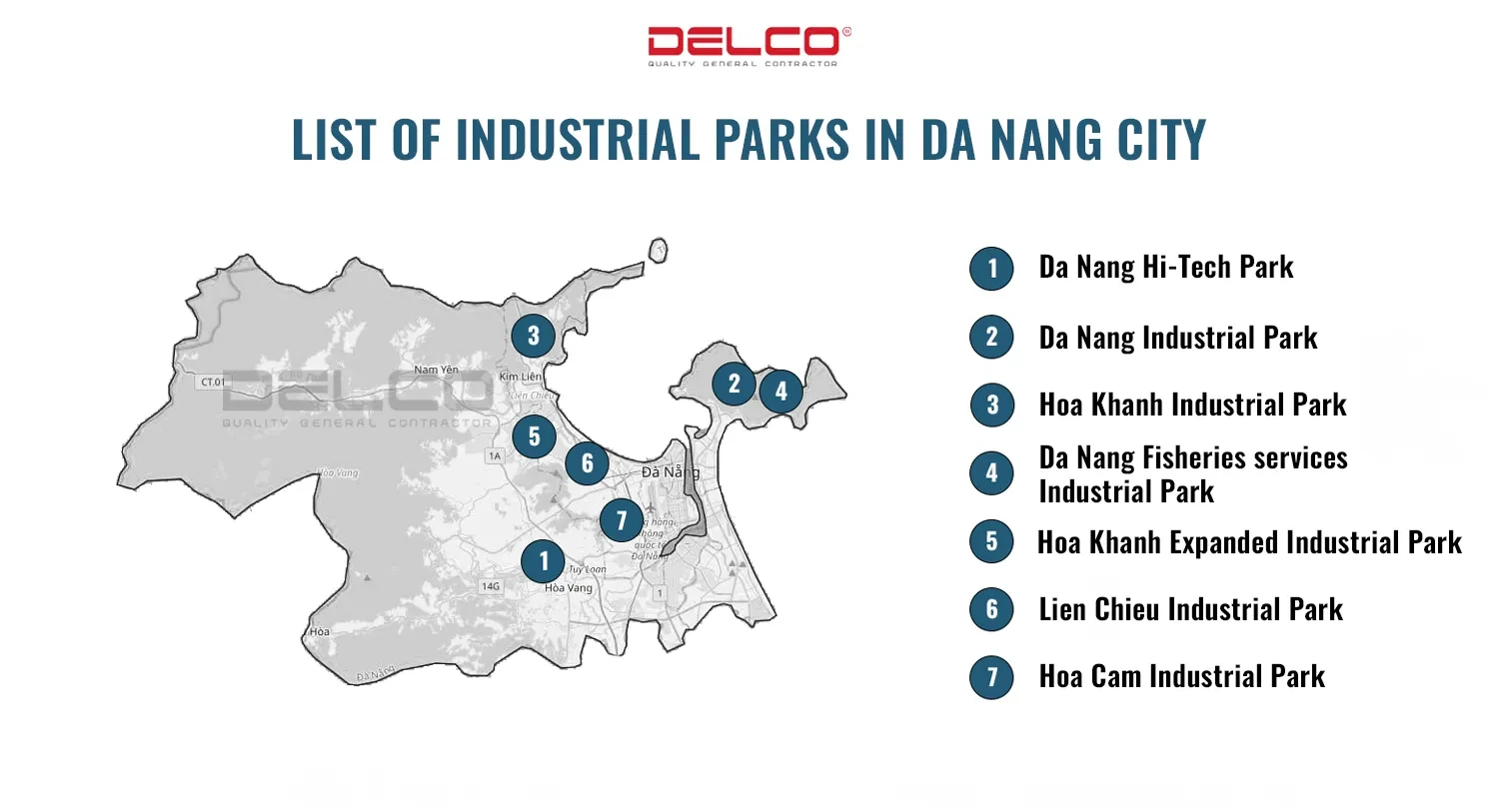
Da Nang Hi-Tech Park
- Area: 1,129.76 ha
- Location: Hoa Vang District
- Investment fields:
- Biotechnology for healthcare, agriculture, and aquaculture
- Microelectronics, mechatronics, and optoelectronics
- Automation and precision mechanics
- New materials, nanotechnology, and new energy
- Information and communication technology, software development
- Environmental technology, petrochemical-related technologies, and other specialized technologies
Da Nang Industrial Park
- Area: 50.00 ha
- Location: Son Tra District
- Investment fields:
- Mechanical assembly
- Chemical, plastic industries, and post-petrochemical products
- Agricultural, forestry, and seafood processing
- Paper and packaging production
- Construction material manufacturing
- Hoa Khanh Industrial Park
- Area: 395.72 ha
- Location: Lien Chieu District
- Investment fields:
- Mechanical assembly, electronics, textiles
- Post-petrochemical products like packaging, plastics
- Agricultural, forestry, and seafood processing
- High-quality construction materials for medium and small-scale projects
Da Nang Fisheries Service Industrial Park
- Area: 57.90 ha
- Location: Son Tra District
- Investment fields:
- Seafood processing industry
- Fishery port logistics services
Hoa Khanh Expanded Industrial Park
- Area: 212.12 ha
- Location: National Route 1A, Lien Chieu District
- Investment fields:
- Mechanical assembly
- Chemical, plastics industries, and post-petrochemical products
- Agricultural, forestry, and seafood processing
- Paper and packaging production
- Construction material manufacturing
Lien Chieu Industrial Park
- Area: 289.35 ha
- Location: Hoa Hiep Ward, Lien Chieu District
- Investment fields:
- Heavy industries
- Manufacturing industries
- Chemical industry
- Construction materials production
- Warehouses
Hoa Cam Industrial Park
- Area: 136.73 ha
- Location: Cam Le District
- Investment fields:
- Electrical and electronic equipment
- Precision mechanical components and products
- Textiles
Planned Industrial Parks for 2021-2030
Hoa Cam Industrial Park Phase 2
- Area: 120.019 ha
- Location: Cam Le District and Hoa Vang District
- Priority investment fields: Mechanical assembly, electrical and electronic components manufacturing, consumer goods production, household appliances manufacturing, etc.
Hoa Nhon Industrial Park
- Area: 360.1 ha
- Location: Hoa Nhon and Hoa Son Communes, Hoa Vang District
- Priority investment fields: Light industries, high-grade construction materials
Hoa Ninh Industrial Park
- Area: 400.02 ha
- Location: Hoa Ninh Commune, Hoa Vang District
- Priority investment fields: Electronics, mechanical industries, consumer goods manufacturing, pharmaceuticals production


